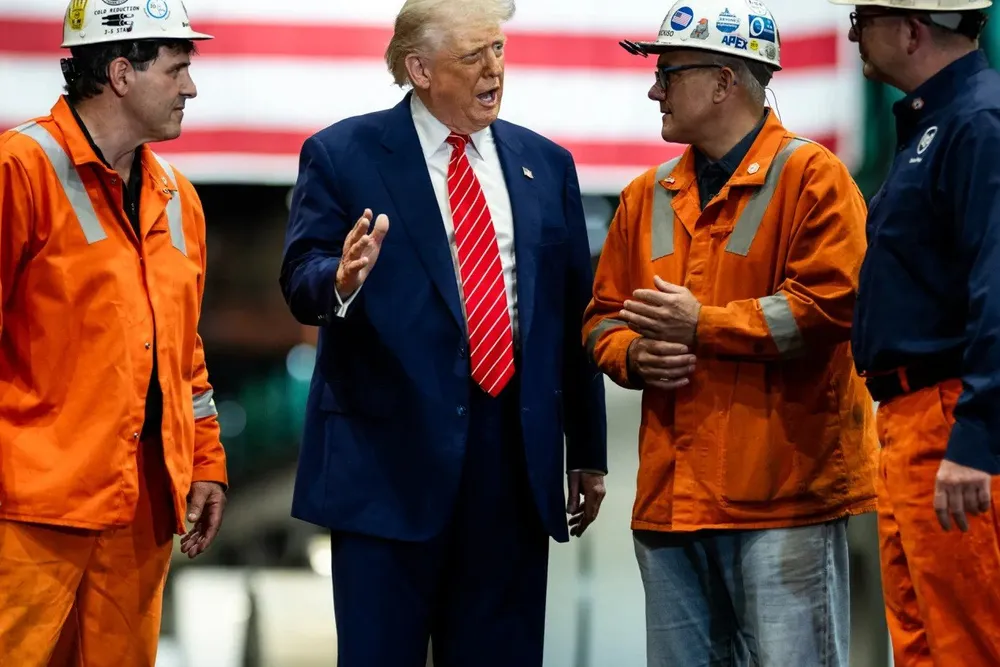Orsted and Equinor back in hot seat as steel tariffs raise new US wind fears
President hiked levies to 50% on metals that are key to projects, raising costs and further imperiling the industry

President Donald Trump announced Friday the tariff on steel and aluminum would double to 50% starting 4 June, a move that saw steelmakers’ share prices surge in early day trading while raising cost concerns for myriad steel users, including the wind power industry.
More than 80% of the total mass of an offshore wind turbine is steel, with estimates from Boston Consulting Group and National Renewable Energy Laboratory ranging from 217-300 tonnes per MW. The US has virtually no capacity to produce offshore wind-grade steel, putting all projects in construction under threat of significant hikes.
“Offshore wind projects in the US rely heavily on international suppliers,” said Harrison Sholler, BloombergNEF offshore wind analyst.
“Projects like Equinor's Empire Wind and Orsted's Sunrise Wind, which have only just started construction, will be hit hard by this increase, adding millions in costs,” Sholler added.
Tariff hikes are just the latest hurdle for US offshore wind, which has struggled for years with surging costs and supply chain turmoil, followed by Trump's hostile memorandum that put the brakes on all sector permitting and leasing, while exposing even permitted arrays to the threat of cancellation.
Three US projects are in active at-sea installation: Dominion Energy’s 2.6GW Coastal Virginia Offshore Wind (CVOW) array; Avangrid-Copenhagen Infrastructure Partners’ 800MW Vineyard Wind 1, and Orsted’s 704MW Revolution Wind.
These projects may be insulated from tariff impacts as they have already contracted many of their components, with some shipped and waiting in American marshalling yards.
Orsted’s 920MW Sunrise has only begun in-water construction earlier this year, which may make it more vulnerable to tariff impacts as major steel components are brought in from European manufacturers.
The developer may avoid some of impacts, though, “as costs of components may be already locked in by contracts and the suppliers have started manufacturing components,” said Petra Manuel, senior analyst, offshore wind, at consultancy Rystad Energy.
It has also contracted with infrastructure firm Riggs Distler for the manufacture of advanced foundation components.
Like its sister projects Revolution and South Fork, Sunrise will deploy 11MW Siemens Gamesa turbines, which will not be subject to the new 50% rate but will still face 20% reciprocal levies on European Union-produced goods.
The project will deploy Vestas’ flagship 15MW turbines on monopiles manufactured by SiF of the Netherlands, which will face 20% and 50% tariffs, respectively.
Equinor has likewise kickstarted US supply chain investment, most notably a multimillion dollar upgrade to the South Brooklyn Marine Terminal.
A manufacturing facility by a joint venture of Canada’s Marmen and the Netherland’s Welcon for the Port of Albany in New York to build towers for the project was terminated last year amid sector turmoil, however.
An Equinor spokesperson declined to comment on impacts as the tariffs have not gone into effect.
Rystad’s Manuel said: “In general, the planned steel and aluminum tariff will suppress even more the growth of US offshore wind in the near-term.”
Tariff impacts will be less pronounced for onshore wind as comparatively less steel (or aluminum) is used, and the domestic supply chain is well established.
(Copyright)